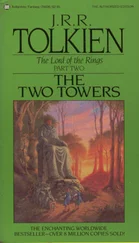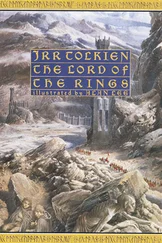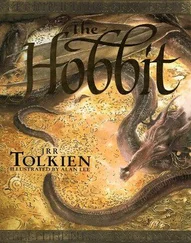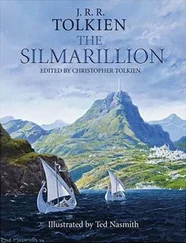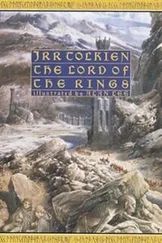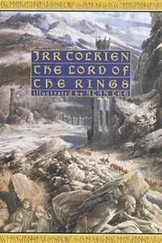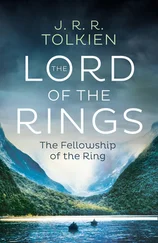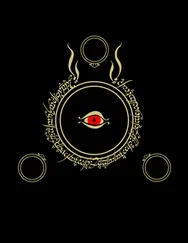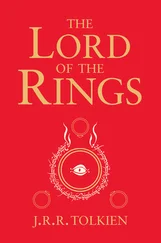

THE FELLOWSHIP OF THE RING
BEING THE FIRST PART OF
THE LORD OF THE RINGS
BY
J.R.R. TOLKIEN


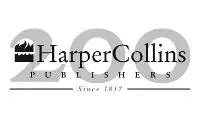
COPYRIGHT
HarperCollins Publishers
1 London Bridge Street
London SE1 9GF
www.tolkien.co.uk
www.tolkienestate.com
 and ‘Tolkien’® are registered trademarks of The J.R.R. Tolkien Estate Limited
and ‘Tolkien’® are registered trademarks of The J.R.R. Tolkien Estate Limited
Published by HarperCollins Publishers 2008
This edition is based on the reset edition first published 2004
First published in Great Britain by George Allen & Unwin 1954
Second Edition 1966
Copyright © The Trustees of the J.R.R.Tolkien 1967 Settlement 1954, 1966
All rights reserved under International and Pan-American Copyright Conventions. By payment of the required fees, you have been granted the non-exclusive, non-transferable right to access and read the text of this e-book on-screen. No part of this text may be reproduced, transmitted, down-loaded, decompiled, reverse engineered, or stored in or introduced into any information storage and retrieval system, in any form or by any means, whether electronic or mechanical, now known or hereinafter invented, without the express written permission of HarperCollins e-books.
HarperCollins Publishers has made every reasonable effort to ensure that any picture content and written content in this ebook has been included or removed in accordance with the contractual and technological constraints in operation at the time of publication.
Source ISBN: 9780261102927
Ebook Edition MARCH 2009 ISBN: 9780007322497
Version: 2018-03-02
Three Rings for the Elven-kings under the sky,
Seven for the Dwarf-lords in their halls of stone,
Nine for Mortal Men doomed to die,
One for the Dark Lord on his dark throne
In the Land of Mordor where the Shadows lie.
One Ring to rule them all, One Ring to find them,
One Ring to bring them all and in the darkness bind them
In the Land of Mordor where the Shadows lie.
CONTENTS
COVER PAGE
TITLE PAGE
COPYRIGHT
NOTE ON THE TEXT
NOTE ON THE 50 THANNIVERSARY EDITION
FOREWORD TO THE SECOND EDITION
PROLOGUE
BOOK ONE
CHAPTER 1: A LONG-EXPECTED PARTY
CHAPTER 2: THE SHADOW OF THE PAST
CHAPTER 3: THREE IS COMPANY
CHAPTER 4: A SHORT CUT TO MUSHROOMS
CHAPTER 5: A CONSPIRACY UNMASKED
CHAPTER 6: THE OLD FOREST
CHAPTER 7: IN THE HOUSE OF TOM BOMBADIL
CHAPTER 8: FOG ON THE BARROW-DOWNS
CHAPTER 9: AT THE SIGN OF THE PRANCING PONY
CHAPTER 10: STRIDER
CHAPTER 11: A KNIFE IN THE DARK
CHAPTER 12: FLIGHT TO THE FORD
BOOK TWO
CHAPTER 1: MANY MEETINGS
CHAPTER 2: THE COUNCIL OF ELROND
CHAPTER 3: THE RING GOES SOUTH
CHAPTER 4: A JOURNEY IN THE DARK
CHAPTER 5: THE BRIDGE OF KHAZAD-DÛM
CHAPTER 6: LOTHLÓRIEN
CHAPTER 7: THE MIRROR OF GALADRIEL
CHAPTER 8: FAREWELL TO LÓRIEN
CHAPTER 9: THE GREAT RIVER
CHAPTER 10: THE BREAKING OF THE FELLOWSHIP
MAPS
KEEP READING
WORKS BY J.R.R. TOLKIEN
ABOUT THE PUBLISHER
NOTE ON THE TEXT
J.R.R. Tolkien’s The Lord of the Rings is often erroneously called a trilogy, when it is in fact a single novel, consisting of six books plus appendices, sometimes published in three volumes.
The first volume, The Fellowship of the Ring , was published in Great Britain by the London firm George Allen & Unwin on 29 July 1954; an American edition followed on 21 October of the same year, published by Houghton Mifflin Company of Boston. In the production of this first volume, Tolkien experienced what became for him a continual problem: printer’s errors and compositor’s mistakes, including well-intentioned ‘corrections’ of his sometimes idiosyncratic usage. These ‘corrections’ include the altering of dwarves to dwarfs , elvish to elfish , further to farther , nasturtians to nasturtiums , try and say to try to say and (‘worst of all’ to Tolkien) elven to elfin . In a work such as The Lord of the Rings , containing invented languages and delicately constructed nomenclatures, errors and inconsistencies impede both the understanding and the appreciation of serious readers – and Tolkien had many such readers from very early on. Even before the publication of the third volume, which contained much hitherto unrevealed information on the invented languages and writing systems, Tolkien received many letters from readers written in these systems, in addition to numerous enquiries on the finer points of their usage.
The second volume, The Two Towers , was published in England on 11 November 1954 and in the United States on 21 April 1955. Meanwhile Tolkien worked to keep a promise he had made in the foreword to volume one: that ‘an index of names and strange words’ would appear in the third volume. As originally planned, this index would contain much etymological information on the languages, particularly on the elven tongues, with a large vocabulary. It proved the chief cause of the delay in publishing volume three, which in the end contained no index at all, only an apology from the publisher for its absence. For Tolkien had abandoned work on it after indexing volumes one and two, believing its size and therefore its cost to be ruinous.
Volume three, The Return of the King , finally appeared in England on 20 October 1955 and in the United States on 5 January 1956. With the appearance of the third volume, The Lord of the Rings was published in its entirety, and its first edition text remained virtually unchanged for a decade. Tolkien had made a few small corrections, but further errors entered The Fellowship of the Ring in its December 1954 second impression when the printer, having distributed the type after the first printing, reset the book without informing the author or publisher. These include misrepresentations of the original printed text – that is, words and phrases that read acceptably in context, but which depart from Tolkien’s wording as originally written and published.
In 1965, stemming from what then appeared to be copyright problems in the United States, an American paperback firm published an unauthorized and non-royalty-paying edition of The Lord of the Rings . For this new edition by Ace Books the text of the narrative was reset, thus introducing new typographical errors; the appendices, however, were reproduced photographically from the hardcover edition, and remain consistent with it.
Tolkien set to work on his first revision of the text so that a newly revised and authorized edition could successfully compete on the American market. This first revision of the text was published in America in paperback by Ballantine Books, under licence from Houghton Mifflin, in October 1965. In addition to revisions within the text itself, Tolkien replaced his original foreword with a new one. He was pleased to remove the original foreword; in his check copy, he wrote of it: ‘confusing (as it does) real personal matters with the “machinery” of the Tale, is a serious mistake’. Tolkien also added an extension to the prologue and an index – not the detailed index of names promised in the first edition, but, rather, a bald index with only names and page references. Additionally, at this time the appendices were greatly revised.
Читать дальше
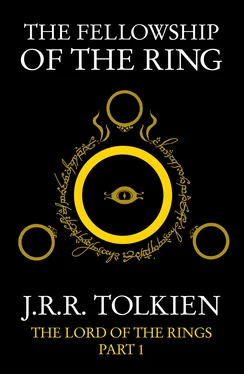





 and ‘Tolkien’® are registered trademarks of The J.R.R. Tolkien Estate Limited
and ‘Tolkien’® are registered trademarks of The J.R.R. Tolkien Estate Limited